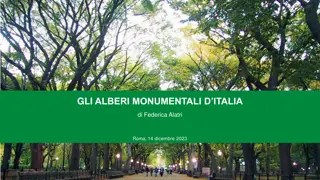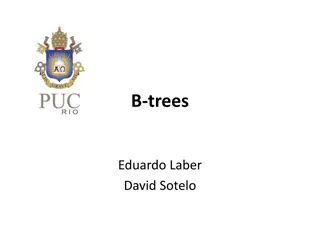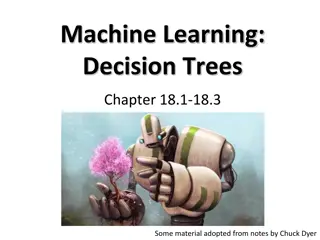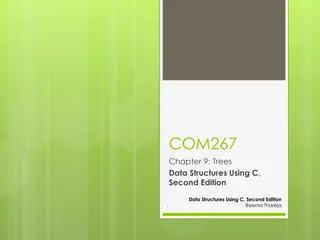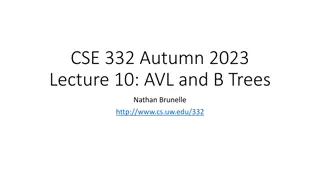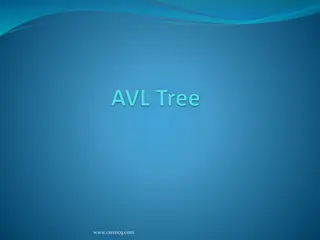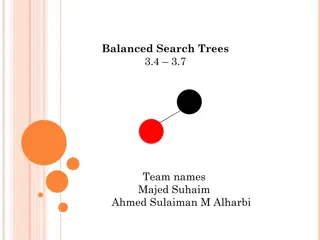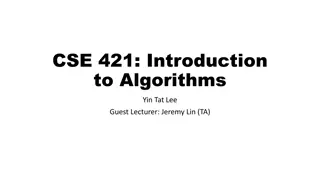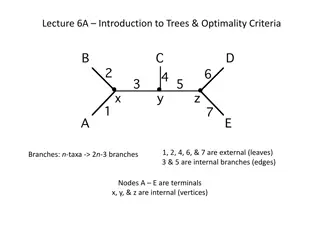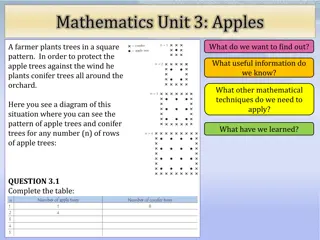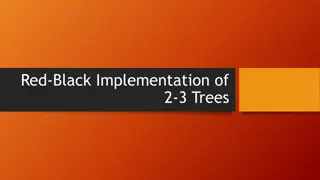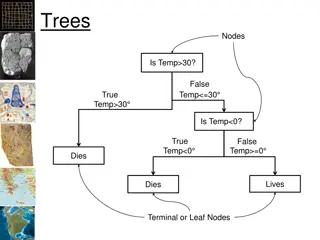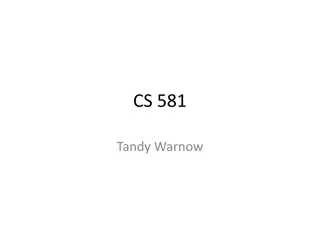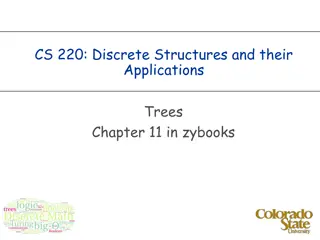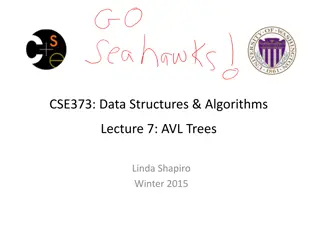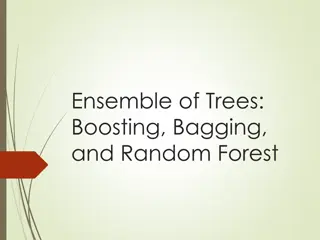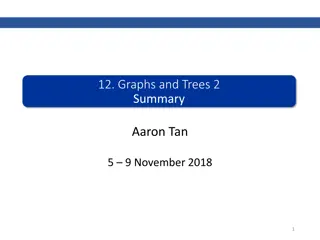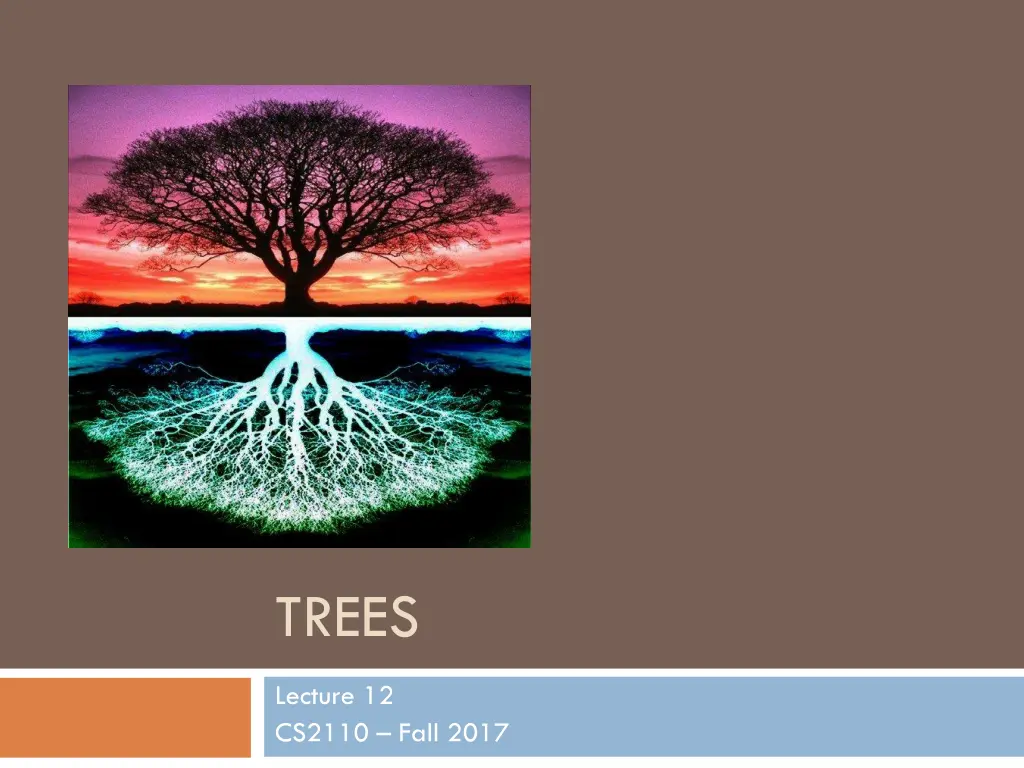
Understanding Trees in Computer Science
Dive into the world of trees in computer science with this lecture from CS2110 Fall 2017. Learn about binary trees, tree structure, terminology, and more. Important announcements included. Start your journey today!
Download Presentation

Please find below an Image/Link to download the presentation.
The content on the website is provided AS IS for your information and personal use only. It may not be sold, licensed, or shared on other websites without obtaining consent from the author. If you encounter any issues during the download, it is possible that the publisher has removed the file from their server.
You are allowed to download the files provided on this website for personal or commercial use, subject to the condition that they are used lawfully. All files are the property of their respective owners.
The content on the website is provided AS IS for your information and personal use only. It may not be sold, licensed, or shared on other websites without obtaining consent from the author.
E N D
Presentation Transcript
TREES Lecture 12 CS2110 Fall 2017
Important Announcements 2 A4 is out now and due two weeks from today. Have fun, and start early!
A picture of a singly linked list: 2 1 1 0 Node object pointer int value 0 Today: trees! 2 1 4 1 1 0 1 3
Tree Overview 4 5 5 Tree: data structure with nodes, similar to linked list Each node may have zero or more successors (children) Each node has exactly one predecessor (parent) except the root, which has none All nodes are reachable from root 2 4 2 4 8 9 7 8 7 9 A tree Not a tree 5 5 4 6 7 8 8 List-like tree Also not a tree
Binary Trees 5 A binary tree is a particularly important kind of tree where every node as at most two children. 5 5 4 2 4 2 In a binary tree, the two children are called the left and right children. 8 9 7 8 7 Not a binary tree (a general tree) Binary tree
Binary trees were in A1! 6 You have seen a binary tree in A1. A PhD object has one or two advisors. (Confusingly, my advisors are my children. ) Adrian Sampson Luis Ceze Dan Grossman Josep Torellas Greg Morrisett
Tree Terminology 7 the root of the tree (no parents) M right child of M G W left child of M D J P B H N S the leaves of the tree (no children)
Tree Terminology 8 M G W ancestors of B D J P descendants of W B H N S
Tree Terminology 9 M left subtree of M G W D J P B H N S
Tree Terminology 10 A node s depth is the length of the path to the root. A tree s (or subtree s) height is he length of the longest path from the root to a leaf. M Depth 1, height 2. G W D J P Depth 3, height 0. B H N S
Tree Terminology 11 Multiple trees: a forest. G W D J P B H N S
Class for general tree nodes class GTreeNode<T> { private T value; private List<GTreeNode<T>> children; //appropriate constructors, getters, //setters, etc. } 12 5 4 2 Parent contains a list of its children General tree 8 9 7 1 8 3 7
Class for binary tree node 14 class TreeNode<T> { private T value; private TreeNode<T> left, right; Either might be null if the subtree is empty. /** Constructor: one-node tree with datum x */ public TreeNode (T d) { datum= d; left= null; right= null;} /** Constr: Tree with root value x, left tree l, right tree r */ public TreeNode (T d, TreeNode<T> l, TreeNode<T> r) { datum= d; left= l; right= r; } } more methods: getValue, setValue, getLeft, setLeft, etc.
An Application: Syntax Trees 16 parsing * 7 + (1 + (9 2)) * 7 1 A Java expression as a string. 2 9 An expression as a tree.
A Tree is a Recursive Thing 19 A binary tree is either null or an object consisting of a value, a left binary tree, and a right binary tree.
Looking at trees recursively Binary tree 20 2 Right subtree (also a binary tree) 9 0 8 3 5 7 Left subtree, which is a binary tree too
Looking at trees recursively a binary tree
Looking at trees recursively value right subtree left subtree
A Recipe for Recursive Functions 24 Base case: If the input is easy, just solve the problem directly. Recursive case: Get a smaller part of the input (or several parts). Call the function on the smaller value(s). Use the recursive result to build a solution for the full input.
Recursive Functions on Binary Trees 25 Base case: empty tree (null) or, possibly, a leaf Recursive case: Call the function on each subtree. Use the recursive result to build a solution for the full input.
Binary Search Tree (BST) 30 A binary search tree is a binary tree that is ordered and has no duplicate values. In other words, for every node: - All nodes in the left subtree have values that are less than the value in that node, and - All values in the right subtree are greater. 5 > 5 < 5 2 8 0 3 7 9 A BST is the key to making search way faster.
Binary Search Tree (BST) 31 5 2 8 0 3 7 9 Compare binary tree to binary search tree: boolean searchBT(n, v): if n==null, return false if n.v == v, return true return searchBST(n.left, v) || searchBST(n.right, v) boolean searchBST(n, v): if n==null, return false if n.v == v, return true if v < n.v return searchBST(n.left, v) else return searchBST(n.right, v) 2 recursive calls 1 recursive call
Building a BST 32 To insert a new item: Pretend to look for the item Put the new node in the place where you fall off the tree
Building a BST 33 january
Building a BST 34 january
Building a BST 35 january february
Building a BST 36 january february
Building a BST 37 january february
Building a BST 38 january march february
Building a BST 39 january february march
Building a BST 40 january april february march
Building a BST 41 january april february march
Building a BST 42 january february march april
Building a BST 43 january february march april
Building a BST 44 january february march april may june august september july october december november
Inserting in Alphabetical Order 45 april
Inserting in Alphabetical Order 46 april
Inserting in Alphabetical Order 47 april august
Inserting in Alphabetical Order 48 april august
Inserting in Alphabetical Order 49 april august december
Inserting in Alphabetical Order 50 april august december february january
Insertion Order Matters 51 A balanced binary tree is one where the two subtrees of any node are about the same size. Searching a binary search tree takes O(h) time, where h is the height of the tree. In a balanced binary search tree, this is O(log n). But if you insert data in sorted order, the tree becomes imbalanced, so searching is O(n).
Tree traversals 53 Other standard kinds of traversals preorder traversal Process root Process left subtree Process right subtree postorder traversal Process left subtree Process right subtree Process root level-order traversal Not recursive: uses a queue (we ll cover this later) Walking over the whole tree is a tree traversal Done often enough that there are standard names Previous example: in-order traversal Process left subtree Process root Process right subtree Note: Can do other processing besides printing
Useful facts about binary trees 54 Max # of nodes at depth d: 2d depth 0 5 If height of tree is h min # of nodes: h + 1 max #of nodes in tree: 20+ + 2h = 2h+1 1 1 4 2 2 7 8 4 0 Height 2, maximum number of nodes Complete binary tree All levels of tree down to a certain depth are completely filled 5 2 4 Height 2, minimum number of nodes
Things to think about 55 What if we want to delete data from a BST? jan feb mar A BST works great as long as it s balanced. There are kinds of trees that can automatically keep themselves balanced as you insert things! apr jun may jul

